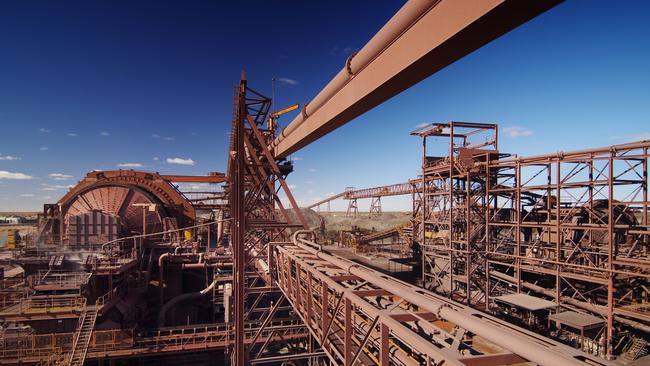
Earlier in the afternoon most of the traders covered their short positions, causing a late rally, and then they headed home. Many travelled the 40km to Westchester county, which has the second-highest per capita income in the state. Manhattan has the highest.
They were horrified to discover 1000 Westchester residents — many of their friends — had been asked to self-quarantine.
It’s one thing to have the coronavirus hit China or Iran or even other parts of America or even New York, but quite another for beautiful Westchester to be hit. Even those traders who lived in affluent areas outside Westchester were horrified.
Suddenly the coronavirus (the traders have trouble with the new name of COVID-19) was not just another set of statistics but a real threat to their friends, colleagues and relatives. That made them very bearish.
Then came the oil crisis sending the future price of oil through the floor. Not only are many New York traders deep into US oil shares, but their firms have major positions in the high-risk debt securities that have been issues by these oil companies.
The Westchester coronavirus/oil cocktail was lethal and led to some weekend shorting via the US futures market. But the real action would happen when the first major stockmarket opened — Australia — where the third-largest company, BHP, is deep into oil and iron ore.
When our market opened, BHP was hit with a wall of selling and shorting via the US oil/coronavirus cocktail.
Paradoxically, Australia has its own version of the Westchester situation because the “Toorak” medical centre had an infected doctor who saw some 70 patients.
The “Toorak” centre is not exactly in Toorak but is not far away and many traders will know people who now must be quarantined.
Paradoxically, while the selling pressure was developing in New York, good news was coming out of China over the supply chain problem.
The extraordinary efforts China has undertaken to control the COVID-19 version of coronavirus gives the world a chance of restoring big chunks of the supply chain in a few months.
With the help of leading small business researcher Ross Cameron, we discover our first picture of what is actually happening on the ground in Chinese factories.
If the incredible actions China has undertaken to contain COVID-19 are successful (however, the encouraging statistics could be unreliable), then China’s fear will be visitors from overseas reinfecting the nation.
Cameron’s “on the ground” reports, made late last month from various Chinese small business suppliers, detail some of the efforts China is undertaking to get back on its feet.
But where stock is available, there is great uncertainty about demand patterns.
Cameron’s first report comes from an importer/wholesaler who supplies many small retailers across Australia. Employing about 100 people, he sources most of his product from China and says: “Certain provinces that are a distance away from Wuhan (the epicentre) seem to have passed through the problem with vigilant practices by the local government.” That is — “stay home until we tell you that you can go back to work”.
He continues: “So in certain provinces you can get government approval to resume work provided you put into place health safety measures. For example, my older brother has some big contracts with US and European customers and works out of China.
“About a week ago, he went into China and will stay at his factory for about four to six weeks. His factory is back at full capacity.
“He was telling me that there has to be a full-time temperature checking station at the factory gate. This is also the case at most, if not all, apartment buildings where they check your temperature as you enter and leave the premises. He gets checked daily.
“So, most of my suppliers are back at work now, so far as we are being told. We will only have about a four or five-week delay in getting stock. It will affect my Mother’s Day trade, but hopefully not by much.”
The second Cameron report comes from an importer/wholesaler of sportswear who moves about 800,000 items a year.
“Some of our suppliers are really struggling,” he says.
One of those suppliers sent an email that said: “Our factory got the approval to resume working on February 16. However, the workers are coming back much slower than usual.
“Up to today we have 15 per cent production capacity running, and we expect to have 35 per cent production capacity by next week.
“But they are all saying they’ll get orders out on time or one week behind schedule. They are working a lot of overtime and have set employees up from home to cover our queries that are office-based.
“It’s hard to predict what it will be like getting on a ship in March and April but we expect there will be further delays, especially going into the foreign ports that struggle through peak periods, like into Europe.”
A third Cameron report comes from a major a group importing and retailing variety goods that sources about half of its product from China to sell through its 40 or so stores.
“The word from our end is that some ports reopened last week and the flow of stock is about to begin — it’s going to be late but it’s flowing,” the importer says.
That good news is now being swamped.
But long-term Australian investors should be aware of these developments.




The fuse on the time bomb that exploded BHP shares when trading opened on Monday morning was actually lit on Friday night in New York — Saturday our time.